|
:: ::
| I Viaggi Del Gusto UNDER THE TUSCAN SUN |
|
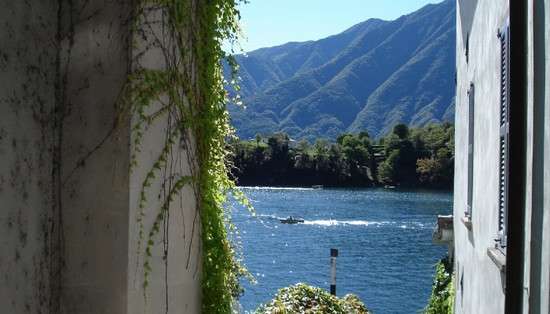 LOMBARDY DA NON PERDERE LOMBARDY DA NON PERDERE
- THE COMO LAKE AND ITS JEWELS
- MILAN AND THE LAST SUPPER OF LEONARDO
- MANTUA THE MEDIEVAL TOWN AND THE VISCONTI'S CASTLES
- THE WINE ROAD OF FRANCIACORTA : THE ITALIANCHAMPAGNE
- THE "NAVIGLI" OF LEONARDO
|
LIST PRIVATE GUIDED TOURS : LOMBARDY AS YOU WANT
|
|
|
LOMBARDY LANDLORDS : THE FASHION OF THE LAKES AND THE GLAMOR OF CITIES
Do you like traveling to the capitals to discover the fashionable lifestyle?
Do you like to have different experiences and let yourself be fascinated by beauty and glamor?
you are looking for fascinating places
.. FOLLOW YOUR STYLE AND WE GUIDE YOU IN THE EXPERIENCE, THE ONE YOU CAN'T DO AND THAT WE DO ONLY FOR YOU !!!
|
CONTACT OUR NOSTRO EMOTIONS' SAILOR 
|
VISIT LOMBARDY
|
|
_________________
VISIT LOMBARDIA
_________________
MILAN
EXPERIENCES
MILANO AND THE FASHION OF COMO LAKE REGION [......]
_________________
FROM MILANO TO BELLAGIO
By Train and Boat for a Foodies Day
_________________
|
|
MAIN CITIES
MILAN THE CAPITAL
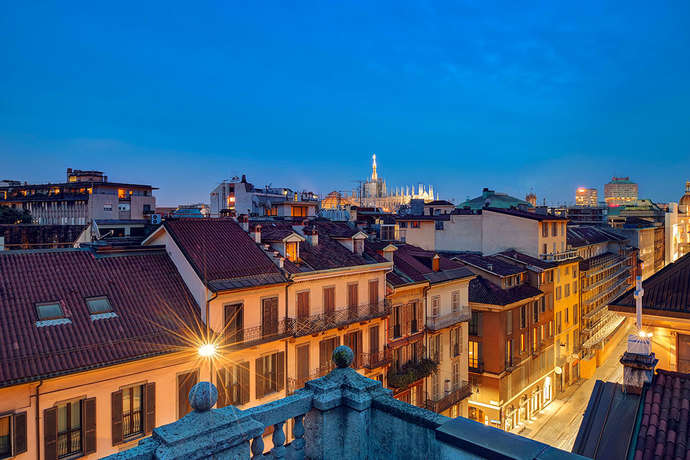
Milan is unanimously recognized as economic and productive capital of the Country and the major Italian pole .Brera is the artistically exclusive area of the city: cafés in the open air, elegant furnishings shops, boutiques of hand tailored clothes, create a artists' Paris-like atmosphere. Among the '700s palaces of this area,, stands the Pinacoteca, with works of art ranging from the XIV to the XX centuries by important artists such as Piero della Francesca, Raffaello, Mantegna, Bramante, Caravaggio. Behind the Sforza Castle there is Sempione Park, a wide green area with small lakes, meadows, woods and little bridges. It contains several monuments such as the Napoleonic Arenate Tower designed by Giò Ponti and the Triennale of Milan. Ahead, on one of "piazza Duomo", stands the huge portal of the Vittorio Veneto Gallery, also known as "Milan's parlour", with its ancient cafés, restaurants, boutiques and ancient bookshops. Close to the Cathedral, there is the picturesque and ancient Merchant's Square with its historical buildings representing Milan cultural life from Middle Ages to the '700s: the Palace of Ragione of 1200, the Osii Loggia, the XVII century Palace of the Palatine Schools and, at the beginning of Merchant Street, the Palace of Giureconsulti.
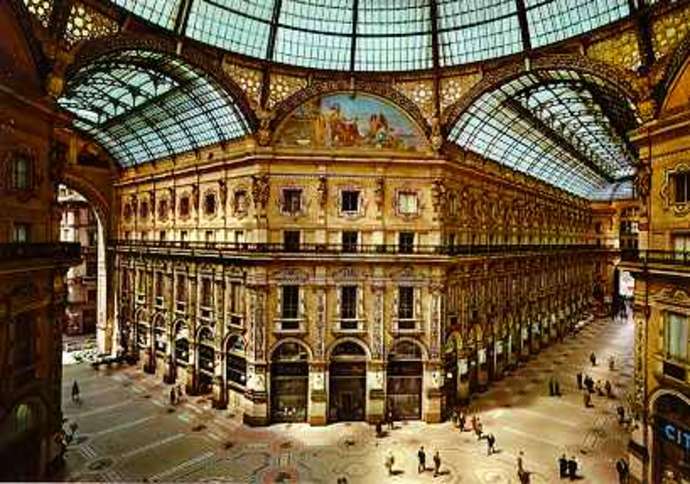
Towards Porta Venezia there are the beautiful XVIII century gardens which host rare botanic species as well as monuments dedicated to famous protagonists of the Italian history. The religious history, too, has left its mark in these places. Besides the imposing Lombard-Gothic Cathedral, other Basilicas show their invaluable beauty and value, such as S.Ambogio's, the most ancient of Milan, built in 379 a.C., S.Eustorgio's, S.Lorenzo Mayre's and S.Maria delle Grazie's. Milan also offers a large series of museums and theatres, the most ancient of which is the Pinacoteca Ambrosiana of 1609, exhibiting masterpieces of artists such as Caravaggio, Leonardo da Vinci, Raffaello and Botticelli; then the La Scala Theatre Museum (dedicated to the works of the famous theatre), the Science and Technique Museum and the Risorgimento Museum. Leaving the centre, we find the Navigli, which date back to 1100 and which, towards the end of 1300, were opened to navigation from the River Ticino to downtown in order to transport the marble which was used to build the Cathedral. The ancient Dock of Porta Cicca is the timeless symbol of the hard work of man: for many centuries it had been an important commercial harbour which was permanently closed in 1979. Today the Naviglio Grande and the Naviglio Pavese, which links Milan to Pavia, are among the most suggestive places of Milan, with their old and typical "banister houses", the clubs, the trattorias, the painters' workshops being handed down from generation to generation, the hydraulic engineering works such as lift bridges, floodgates and dams, which testimony and carry on a centuries-old experience.
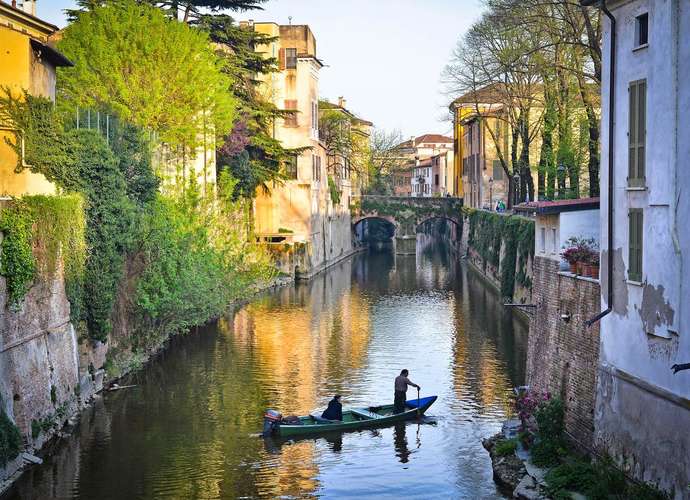
The territory includes the metropolitan and hinterland areas of Milan crossed by the ancient system of fluvial transportation, the Navigli, which are still today the link between city and countryside. It is a net of highly fertile lands, with evident traces of their rural past made of traditional cultivations, ancient farmsteads, old mills. The landscape along the five Navigli is characterized by the presence of the three regional parks of Ticino Valley, Upper Adda, Southern Rural Milan. The Ticino Park crosses forty-six municipalities belonging to the provinces of Milan, Varese and Pavia. Eastwards the province of Milan there is the Upper Adda, in the middle of the palmy hills of Brianza and the wooden River Adda's banks, which often host sumptuous villas of the '700s and historical monuments of great importance. Situated in semicircle along the Southern belt of the province of Milan, stands the Southern Rural Milan Park. Its particularity is the abundance of waters: it is in fact crossed by the Rivers Adda, Olona, Lambro and many other historical streams such as the Vettabia, the Ticinello, the Addetta, the Muzza
COMO AND THE LAKE
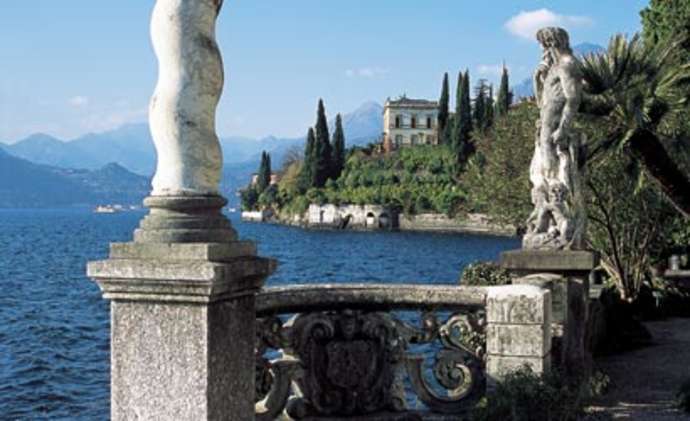
Characterized by mountains rich of vegetation and numerous streams, the territory around Lake Como offers an extremely heterogeneous landscape. Along the rivers, it is typified by green meadows, thick woods, imposing rocks, picturesque villages overlooking the lake with beautiful villas, parks and gardens. In addition to the lacustrian flora, also azaleas, rhododendrons, perfect flowers, cedar- and orange-trees cover the land emerging from the lake. In the areas where climate is particularly mild and wet, there are olive-trees, palm-trees, cypresses, bay trees and several subtropical plants. The abundance of water that flows into the lake contributes to this lush vegetation. More than 30 streams, in fact, enrich this basin. In particular, the Mera, which springs in Valchiavenna, and the Adda, which originates in Valtellina and leaves the branch of Lecco after forming the tiny lakes of Garlate and Olginate. Also human settlements benefit from this richness of water flows: the majority of the centres developed in proximity of the sediments left by the rivers. In the sunniest areas, like Tremezzina, in winter climate never reaches cold temperatures. In summer hot temperatures are mitigated by a good ventilation. The mildest climate is enjoyed by the Mid-Lake, where the three branches meet. The landscape here is worldwide celebrated, above all the sight of Bellagio's promontory, the northern Grigna which overlooks Valsassina, and the panorama of the Upper Lake with the Alps chain on the background
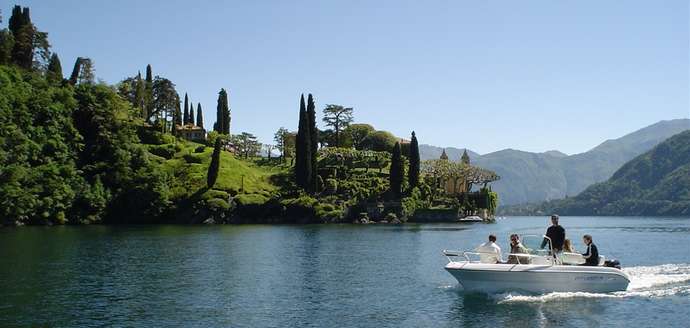
Along the coast of the lake, especially from Cernobbio to Gravedona and in Bellagio, landscape is adorned by beautiful villas with parks full of flowers and rare exotic plants; among them, Villa Passalacqua in Moltrasio and Villa d'Este in Cernobbio, today turned into a sumptuous hotel with a magnificent park. Close to the extremity of Balbianello a Lenno the wonderful Villa Arconti opens the series of famous villas of Tremezzina, like Villa Carlotta, famous for its artistic masterpieces and the natural attractions of its flowering park. On the opposite side, in Bellagio, other villas, like Villa Serbelloni and Villa Melzi, are embellished by fabulous parks. The branch of Lecco offers the most severe and suggestive landscapes of the southern Grigna, a mountain group of dolomitic origin which reaches 2184 m, and the Corni of Canzo which, laying down towards the lake, create suggestive declivities and inlets. In this area there are numerous springs, like the one of Fiumelatte, described and celebrated by Leonardo of Vinci. This landscape is characterized by narrow elevated paths embraced by high slopes, like the famous Orrido di Bellano, an enchanting natural show which can be visited crossing flying bridges.
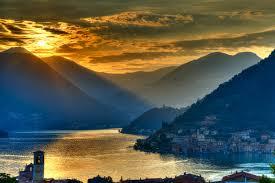
Not far form here there is the Renaissance Villa Monastero of Varenna, used several times as location for cinema and TV productions, together with Menaggio, ancient and fascinating medieval village
BERGAMO AND SPARKLING WINE REAGION
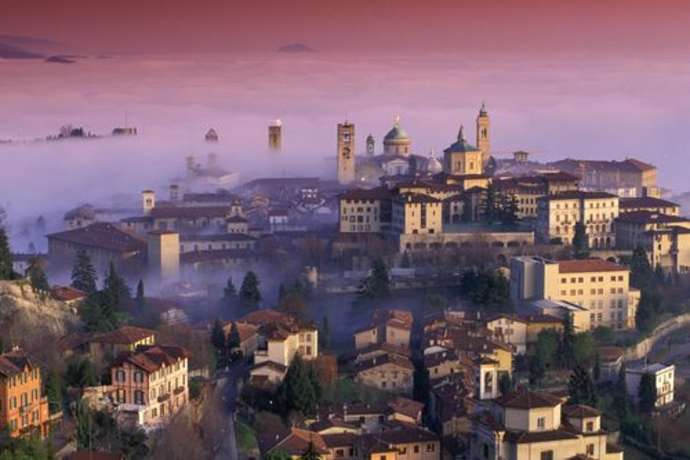
The dedicated work of man and a friendly and generous nature have produced great results in this land. On one side Bergamo is an artistic province, rich of architectural masterpieces like Piazza Vecchia and the old basilica of Santa Maria Mayre or Colleoni Chapel, in the Upper town. On the other side it is a modern and dynamic town, which perfectly expresses the capacity of combining man's talent and the nature's beauties. For example, since Roman times, the thermal baths and the mud of San Pellegrino Terme, Sant'Omobono, Trescore Balneario, have been used for different kinds of care and treatment. In addition to their spas, these localities are also privileged by an uncontaminated nature which offers relaxing places for holidays. An example of the perfect match of human genius and nature is the spectacular 315m high waterfall of Serio, which can be seen five times a year, when the dam above Valbondione is open. Nature, history and man's talent are also visible in the numerous medieval structures that were built for the strategic importance that these places had in the past. The Fortress of Bergamo, built on the hillock of S. Eufemia in the XIV century, the Castle of Gorle dating back to 1200, or the Castle of Castelli Calepino, imposing fortress of 1400, are only a small portion of the monuments that made the history of the entire region. A history that was also characterized by a constant religious and spiritual dimension, which originated one of Italy's richest historical, artistic and cultural heritages. In the entire province of Bergamo there are one hundred and six sanctuaries dedicated to the Blessed Virgin Mary, and the numerous visitors that still today go to visit the small centre of Sotto il Monte, birthplace of Pope John XXIII, confirm how deep is the link between the population and this village. All over the territory, however, there are still older religious monuments, such as the imposing Sanctuary of Caravaggio, of the XV century, the Basilica of S. Giacomo a Pontida, where there is an ancient Benedictine monastery of the XII century, the Sanctuary of the Madonna Cornabusa, the most characteristic of the whole region, built inside a huge cave of the Val Imagna, which, still today, is a destination of visits and pilgrimages from every corner of the world.
Not very far from Bergamo, there is a deviation to Calepio Valley, homeland of the friar Ambrogio Calepino, who invented a Latin dictionary, the so-called "Calepino", named after him. It is a pleasant path of 20 km which leads tourists back to Sarnico, on the Iseo Lake, through beautiful historical nucleuses of ancient origin, and traces of the fruitful artistic activity of Lorenzo Lotto in Credano (but also of Romanino, in Villongo San Filastro).

An itinerary to visit part of the 300.000 engravings starts from Capo di Ponte, where there are the Camuno Centre of Prehistoric Studies and the Cave Art National Park of Naquane (one of the seven cave art parks of this area) which, over a surface of approximately 30 hectares, contains about a hundred rocks, including the famous "Big Rock", where almost a thousand figures depict scenes of hunting and tools, gods, symbols, huts. It is a land full of attractions, such as the spas of Darfo and Boario Terme, the near ski resorts of Alpiaz-Monte Campione, which can be reached going up a lateral valley across centuries-old chestnut tree woods: the Scalve Valley, very interesting for its landscapes and hosting the Spas of Angolo and the winter resort of Schilpario.
Southwards and in the Cavallina Valley the scenery is very different: here visitors find castles and monasteries and villages which still maintain a medieval atmosphere. Here there is the small and picturesque lake of Endine ,some historical hamlets, the Suardi Villa and the small church of S.Barbara with beautiful frescoes by Lorenzo Lotto. In Trescore Balneario, the neoclassic style of some buildings recalls the tone of the small spa centres with big gardens and monumental architectures.A few kilometres far there is Zandobbio, another thermal resort, and the imposing Benedictine monastery of S.Paolo d'Argon. The wide area between the Iseo Lake and the town of Brescia, called Franciacorta already in the XVII century for its prerogatives of tax-free district, today is worldwide famous for its excellent Italian sparkling wines. It also includes localities of historical and naturalistic interest such as Rodengo Saiano and its Abbey of S.Nicola, Passirano with its fortified fence and the wetland of the Torbiera del Sebino, behind the lake, important natural reserve protected by the Region.
BRESCIA AND THE IRON VALLEY
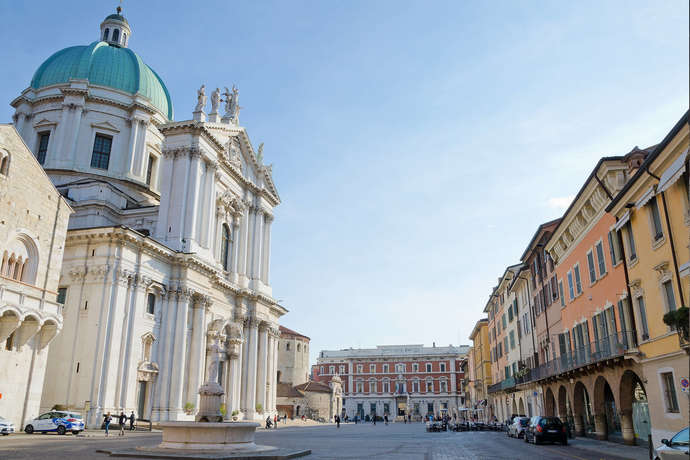
The Trompia Valley is the smallest of the three valleys in the Brescia province. Traditionally, the Trompia Valley is divided in two parts: the low and middle part of the valley, spreading from Brescia to Gardone Val Trompia, famous for the production of weapons, and the high valley, the so-called "Iron Realm".Since its origin, the low part, Brixia, today Brescia, focused its economy on the production of this metal. For more than 40 km from its spring down to the plain, the river Mella flows along the green prealpine belt of the Trompia Valley. From S. Colombano to Concesio, the river Mella characterizes the surrounding environment with its flow, first faster and alpine, then slower and mountain-foot like. In more than 50 km of length, the Trompia Valley comprises a great part of the geologic history of the Southern Brescia Alps: from calcareous marnes, that is, sea mud solidified about 60 millions years ago . Archaeological, historic, artistic and landscape resources of this part of Brescia characterize the particularly emphasized and diversified class of museums of the Trompia Valley, and not only. Another quality of this valley is, in fact, related to the discovery of the oligomineral characteristics of some of its waters, their thermal utilization, the healthy environment and climate, and, last, but not least, the natural richness offered by the mountains and the snow
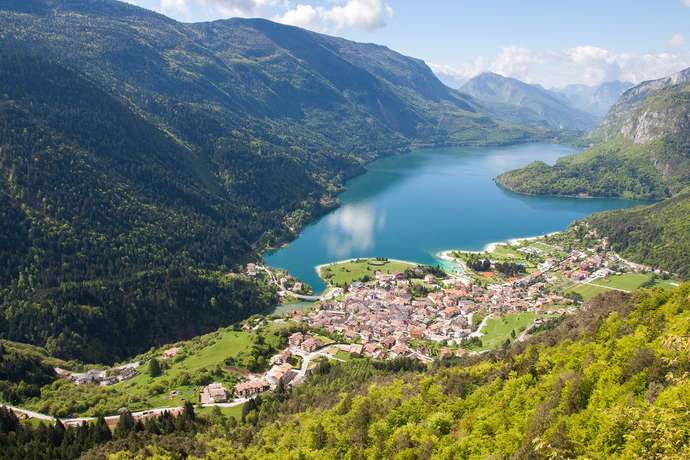
The difference between the minimum altitude, 390 m above sea level, and the maximum one, 3539 m, determines very different habitats in the Adamello region, with a large variety of flora and fauna.In the northern area of the Park, vegetation is almost absent, while in the southern one it becomes lush and the fauna is very abundant. It is possible to observe field edges, forests of chestnuts, alders, maples, hazelnuts, hornbeams, ashes, flowering ashes, trembling poplars, birches, willows, and, in the most exposed places, also oaks and turkey oaks, together with wild cherry trees, black elders, hawthorns, etc.Over 1000 m there are broadleaved trees, conifers, needle leaved and resinous trees, which find here their best habitat. The graffiti on the rocks of Valcamonica are one of the most important heritages in the world for the study of man and his origins. They were made during a very long lapse of time: from Epipaleolithic, about 10.000 years before Christ, to the arrival of the Roman Legions in the valley towards the end of the I century b.C.. The historical and traditional buildings of the valley are very suggestive, too: the typical rural buildings, made of stone and wood, which sometimes could have up to four or five floors, exist still today.
Another important town, characterized by pluricentenary traditions is Ponte di Legno, important tourist resort of the region, one of the main domaines skiables of the Alps with more than 100 km of pistes, which from the 3000 m of the Presena glacier lead to the Tonale Pass or to the 1155 m of Temù. The architectonic and natural landscape of Edolo is also significant. The historical centre is, from a stylistic and urbanistic point of view, one of the most ancient and interesting places for its ancient tiny streets, the halls, the portals of granite and marble, the grates and railings finely made, testimony of an ancient handicraft tradition. Among the monuments and the buildings of the centre, Casa Zuelli stands out. Declared national monument, it is a remarkable example of architecture between Gothic and Renaissance style.
PAVIA, CREMONA AND MANTUA , THE TOWN OF PO RIVER
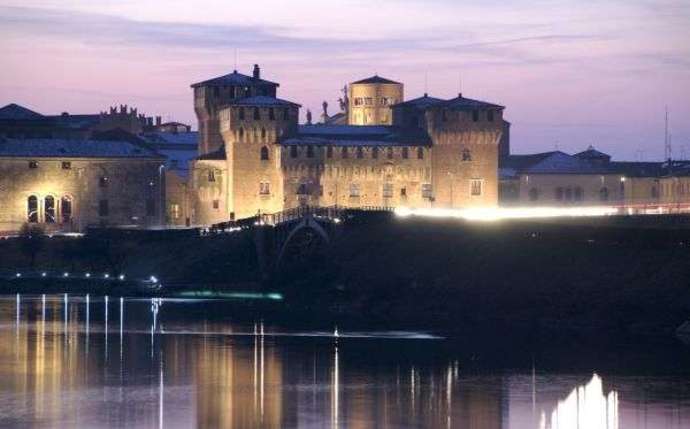
Landscape and history are deeply and constantly interlaced along the entire flow of the River Po. A series of hamlets, walled-in towns and historical centres, still perfectly preserved, are part of fascinating natural sceneries. Following the River, we meet Pavia, the ancient Longobard capital town, with its characteristic Roofed Bridge and its wonderful Romanesque churches, such as S.Pietro in Ciel d'Oro's, S.Michele's, S.Teodoro's. Moving towards the hills of the Oltrepo' pavese, famous for its high quality grapes, we find small and renowned grape growing centres, Voghera and its Visconti Castle, Broni, Stradella, Valle Versa, Canneto Pavese, each of them offering extraordinary historic, artistic, architectonic monuments, often unfamiliar to the majority of people, and included in the context of high quality local life ranging from artistic handicraft to gastronomic tradition. Lodi, very ancient town, offers to visitors a rich historic and architectonic heritage: Vittoria Square, the core of the medieval town, Piazza Mayre, of communal age, hosting the Cathedral. It is one of the biggest Romanesque-Gothic construction of all Lombardy and the starting point of several streets with ancient buildings today under reformation. Here tourists can visit the Civic Temple of the Crowned Virgin Mary, one of the most important Renaissance monuments of the Region and surely the most famous from an artistic point of view. Following the River Po we find Cremona, one of the most beautiful towns of the River Po Plain, dominated by the imposing Torrazzo and the Communal Square, where, still today, the harmonious notes of the Stradivaris can be heard. Eastwards, there is the near "Ideal City" of Renaissance: Sabbioneta. Finally, not very far, there is Mantua, famous for the Bonacolsi Palaces, ancient castellated buildings, the Ducal Palace and Te Palace. These historical monuments are often turned into locations hosting national and international cultural events
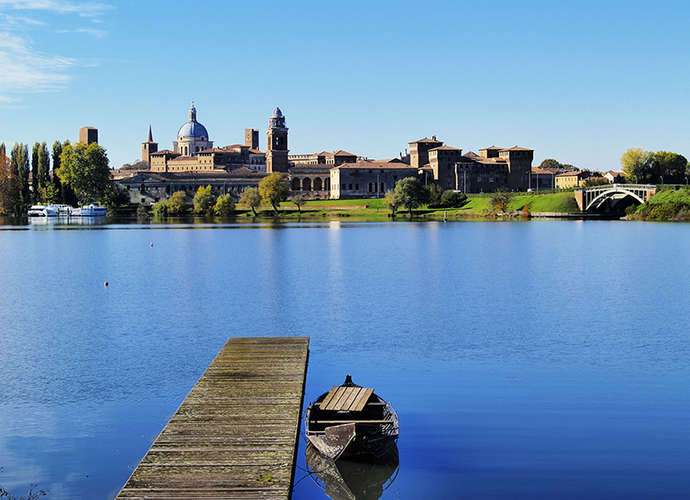
From an environmental, economic and socio-historical point of view, the Lombard land northwards the River Po presents basically homogeneous characteristics and includes more than one third of the entire regional territory. The charm of the plain from Lodi to Cremona, for instance, is represented most of all by the cleverness and care dedicated to agriculture, and to the skilled interlace of irrigation conduits and canals, but also by the accurateness which transpires from the land of the ancient farmsteads, and the regular alternation of towers and bell-towers. Rural sceneries of the plain mix with the incredible hill landscapes of the Oltrepò pavese area which, till the Morenic hills of the Upper Mantua Region, hosts ancient sunny hamlets surrounded by vineyards. This land also owes its homogeneity to its abundant waters, both as vital element and as medium which privileged the interchange, the displacement and the growth of the population in these places. Cultivated areas in the plain and on the hills are in fact crossed by numerous streams which feed the beautiful big protected parks of the rivers Ticino, Adda, Serio, Oglio, and Mincio: naturalistic oasis which have been well preserved from the effects of the great industrialization of last century
SONDRIO, VARESE AND THE VALTELLINA
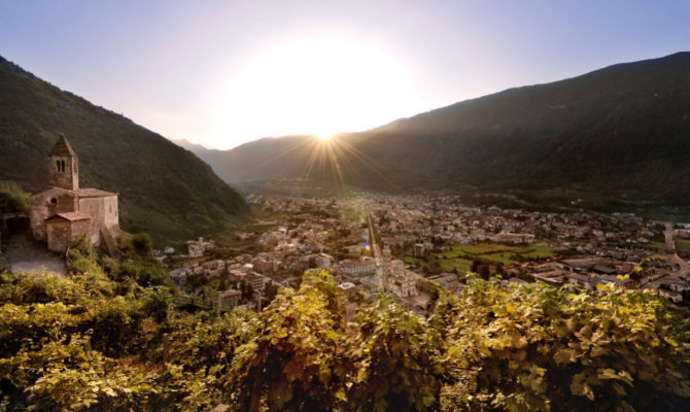
Nature, waters, forests, but also culture, history, ancient buildings characterize the whole Valtellina Region. The high altitudes of the Lepontine, Retic, and Orobic Alps are as appealing as the alpine passes. The protected districts of Stelvio and Orobie Parks border on areas for alpinism and ski. Mountain dews, hill countries, lakes, are the edge of a mid mountain with its historical routes: via Spluga and via Bregaglia. The High Rezia with the Poschiavo Valley, the Stelvio Pass, the Aprica Pass and the S. Mark Pass open a series of primary and secondary paths, of thematic lanes, forests, chestnut forests, ancient inhabited hamlets; but also caves, grazings, terraces, vineyards, towers and castles. Finally, down the valley, the flat areas with the rivers Adda, Mera and many other minor ones, mark the trail of green itineraries, bicycle and pedestrian paths of the main centres down the valley, and are the unique background of a wonderful and rich cultural heritage.
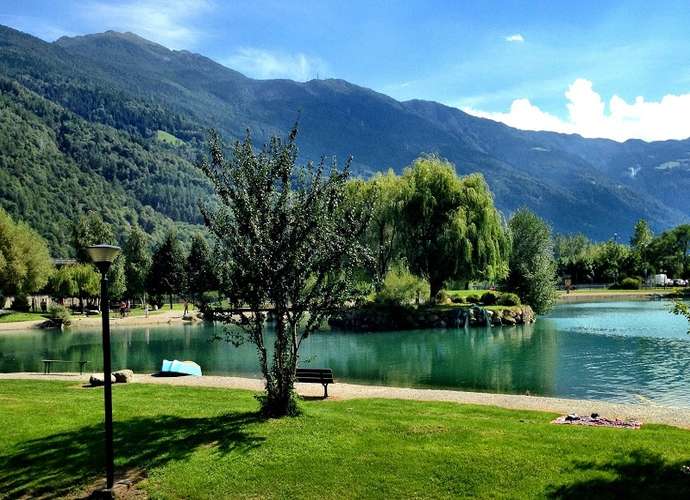
Together with traditional festivals and annual happenings, it is possible to visit a series of small and rich museums. In particular, the Museum of Valtellina Art and History. Very interesting from a historical and architectonic point of view, the Masegra Castles of Sondrio offers an exhibit itinerary based on some historical themes of the Three Leagues domination period (1512-1797). Vertemate Franchi Palace is a Renaissance masterpiece surrounded by an enchanting landscape. The Church of S. Martino of Pedenosso is a particular building situated on a rock in a panoramic position looking all over Valdidentro. The Piro al Grumello Castle rises on a promontory above the city of Sondrio. The Wild Man's Museum is set in an ancient house, famous for the cycle of frescoes of the V century representing the mythological creature of the wild man. The Basilica of the Holy Virgin of Tirano and the small Temple of S. Fedelino also are worth a visit.
The Thermal Baths also have an important role in the local natural heritage. Valtellina, in fact, has always been famous for its thermal waters since the first century a.C.. In particular, Bormio is the most important thermal centre of the region, which also includes the Thermal Baths of Valmasino
|